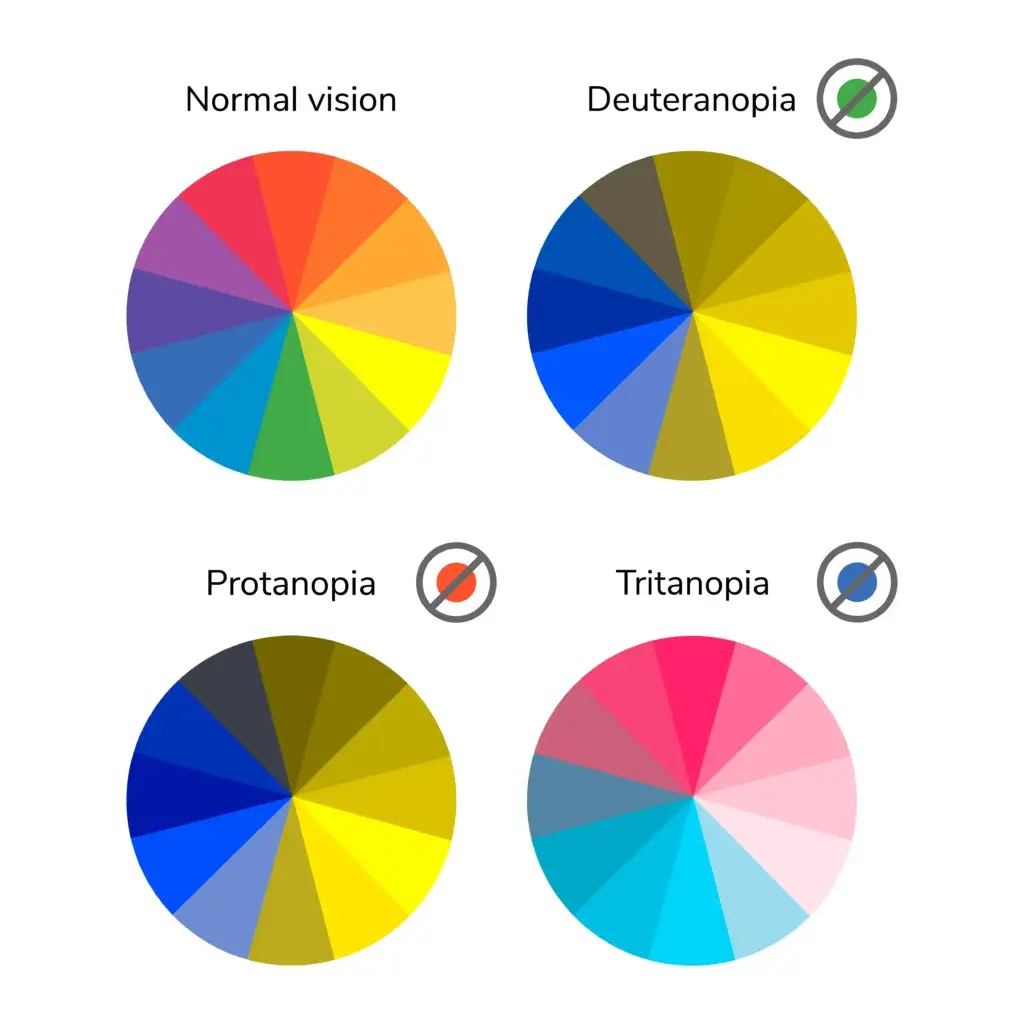
Looking into Color Blindness
Color blindness is also known as color vision deficiency. As Enchroma explains, it’s a condition characterized by a difficulty or inability to perceive one or more colors. Since the problem is caused by abnormalities in the color-sensing nerve cells in the eye’s retina, having a basic understanding of how the eye sees color helps. It’s also useful to delve into the different types of color blindness.
Exploring How the Eyes See Color
When a person has full-color vision, they have the traditional balance of cones, according to Cleveland Clinic. These nerve cells process light and images. Then, they communicate signals between the eye and brain so that you can see color. There are three types of cones:
- Red cones are also called L cones. They sense long wavelengths of light.
- Green cones are referred to as M cones. They sense medium wavelengths of light.
- Blue cones are known as S cones. They sense short wavelengths of light.
People with color vision deficiency may have all three types of cones, but at least one type isn’t working properly. Alternatively, they may be missing one or more types of cones. Whatever the reason, a problem with cones impacts a person’s ability to see colors in the traditional way.
Viewing the Variations of Color Blindness
The number and type of cone that is missing or malfunctioning can have a major impact on the way that a person sees the world around them. As a result, there are several different types of color blindness:
- Protanopia: Also known as red-blind, this type is for those with no red cones. They can see no red light. They see mostly shades of blue and gold. Reds are often confused with black. Dark brown can also be troublesome.
- Deuteranopia: Sometimes known as green-blind, this type is for those with no green cones. They mostly see blues and golds. Reds can be mistaken for greens, and certain yellows may appear similar to bright greens.
- Protanomaly: Referred to as red-weak, protanomaly is diagnosed when patients have all three cones. However, their red cones are not as sensitive as expected. Red appears as a dark gray. Any hue that contains red is muted.
- Deuteranomaly: Also known as green-weak, deuteranomaly patients have all three cones, but their green cones are less sensitive. As a result, they don’t see green well. They see mostly blues and yellows. Other shades are muted.
- Tritanopia: Known as blue-blind, this rare type has no blue cones. People cannot see blue light. They mostly see reds, pinks, and lavender.
- Tritanomaly: Sometimes called blue-weak, this uncommon type has all three cones, but the blue cones are less sensitive. People can see some blue, but it looks either green or muted.
- Achromatopsia: Sometimes called monochromacy, this condition presents in people who have no working cones. They see the world in shades of gray. They also frequently have to deal with other vision issues.
Color blindness is often an inherited condition, but it can also be an acquired one. While there are no cures for colorblindness, it is still important to discuss any concerns that you have with your eye doctor. They can check for the condition during an eye exam and either relieve your worries or help you connect with resources. These might include special glasses that intensify color or smart strategies to help you function in a world full of colors.
Heffington’s is here to help with all your optical needs. Whether it’s an annual eye exam, a contact lens fitting, the perfect pair of glasses, or questions about color blindness, we’re your experienced, knowledgeable, hometown team. To learn more about our products and services, please get in touch with us online, send an e-mail to asktheexperts@heffingtons.com, or give us a call at 417-869-3937 (Optiland location) or 417-882-3937 (House of Vision location). We look forward to hearing from you!
